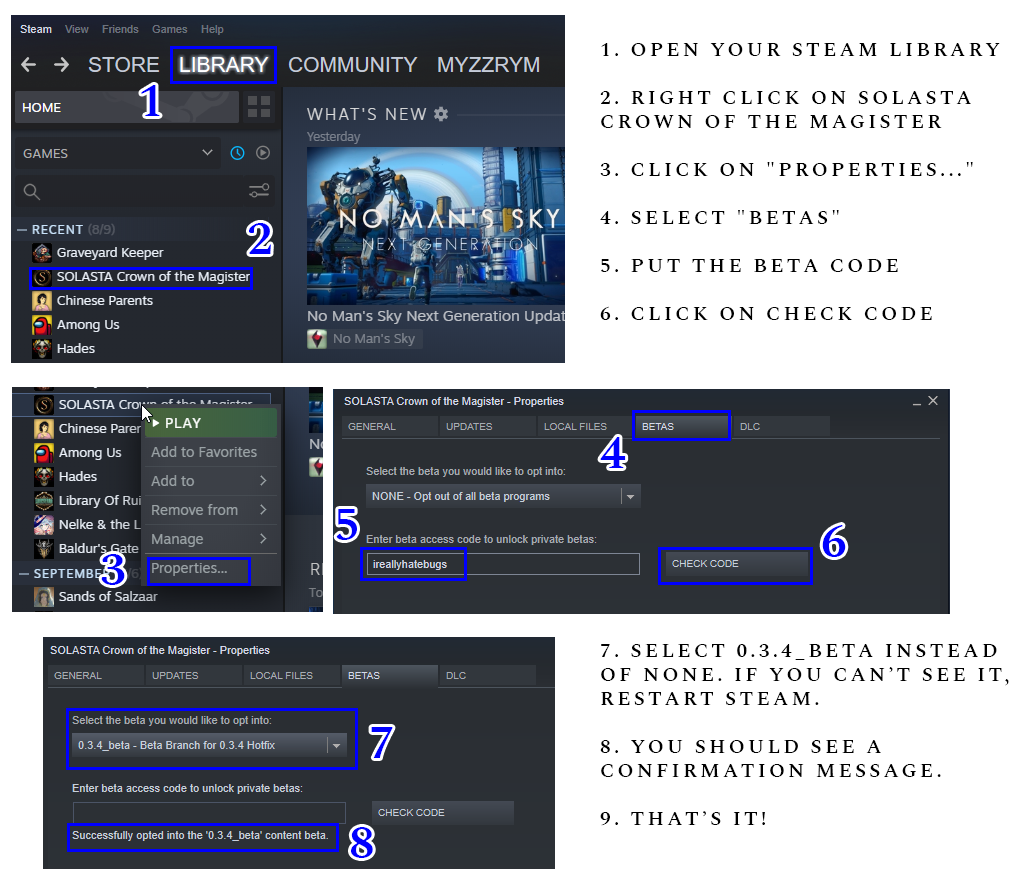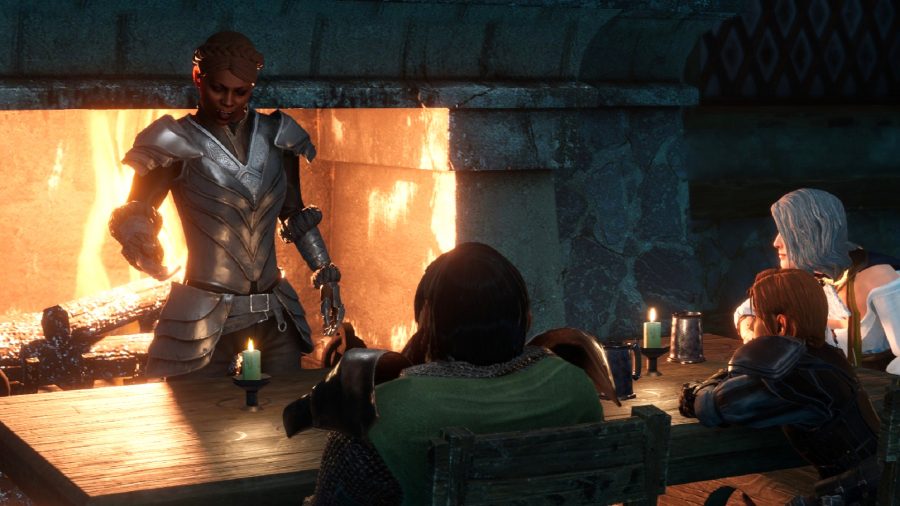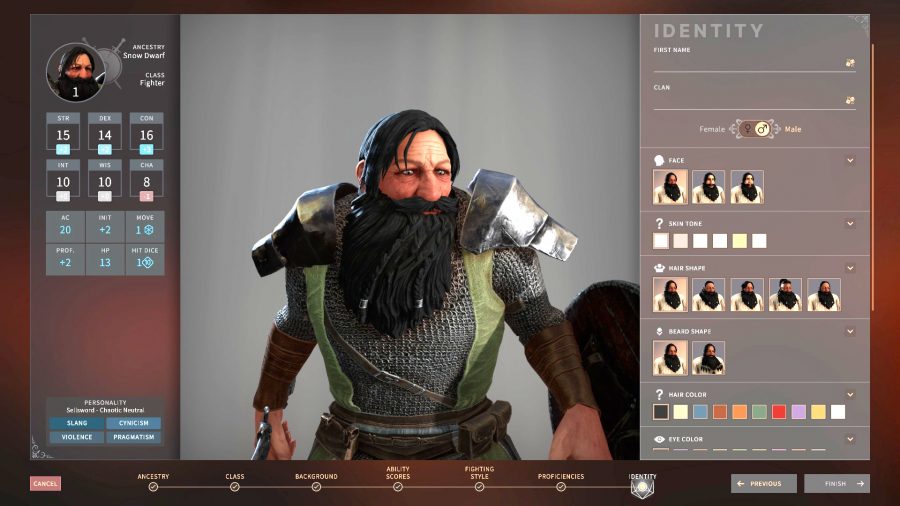You assign your standard D&D alignments, like chaotic good or neutral evil, but you also give your characters traits based on these alignments. These traits act like guardrails to steer your characters through conversation: characters that use slang might turn off more noble-leaning NPCs. Almost all of the conversation between your party and other NPCs is fully and competently voice acted, yet done without any input or direction from you.
On rare occasions you’ll be required to make a dialogue choice, which is tied to both a party member and, potentially, a skill check. Some of your traits affect what appears here. If your character is more inclined to violence, like my dwarf fighter, then his signature move in scenarios like this will be to try to intimidate people.
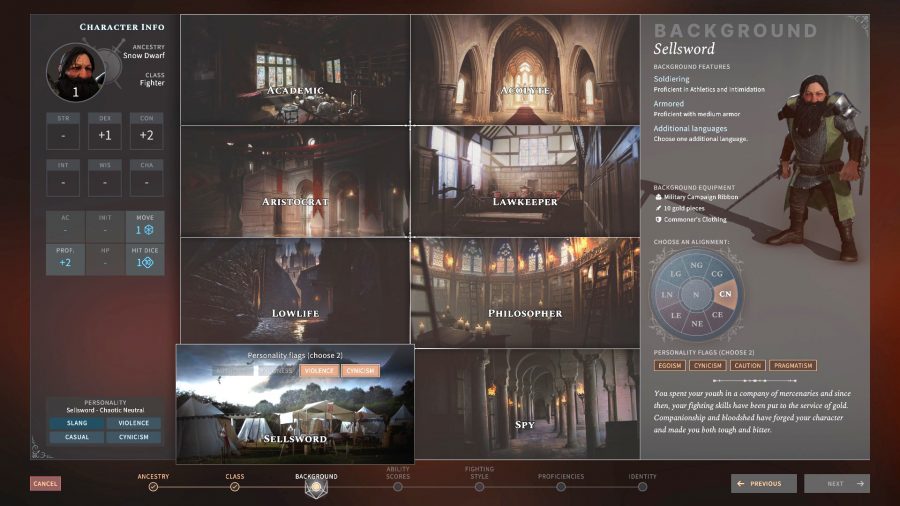
It’s pretty good fun to just wind up a bunch of characters and watch them go like clockwork toys. Since you choose your starting party at the beginning, and can potentially create every member (or choose from a short list of pre-gen characters), you could create a wildly mismatched group of personalities just to see how they’ll navigate certain situations. It’s interesting to see how different groups, maybe one without a healing cleric or anyone capable of reading magic, would figure out a given puzzle.
All this automation comes at a cost, however, which you’ve probably already guessed. And yes, I do wish there were more options to role-play more actively. A multiplayer option would also really set Solasta apart: Considering how air-tight its mechanical translation of 5e’s ruleset is, this would be a brilliant platform in which to host a digital tabletop session or two. Its clean UI shows nearly all the necessary information all the time, and you even get a bunch of customisable dice that really roll on-screen for every check, attack, and damage calculation. It’s the closest a videogame has got to being D&D without engaging with real people.
The combat scenarios in Solasta are where the most clever and devious world design happens. Most dungeons are
actually dark, and require your party to consider how they plan on seeing through it. Some races do so naturally, but those that can’t will need a light source. Ignore this at your peril, because enemies who aren’t illuminated will have you at a disadvantage. And yet, carry a torch in your hands at your peril, too, because enemies get bonuses to hit against you when you’re lit up.
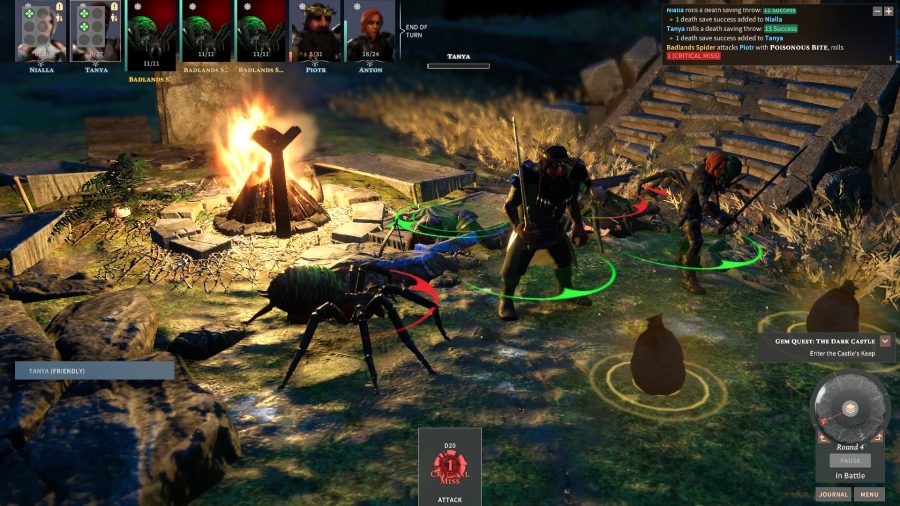
Some of the best dungeon layouts use terrain and elevation to really test your party’s gumption. Almost immediately, you’ll find yourself having to jump over gaps to get to enemies, at the risk of them shoving you off the ledge you just traversed. Many enemies can fly, or climb up the walls, finding weird ways to get you by thinking outside the box as you defend against them. There’s plenty of skulking in hallways and brawling with standard fighter types, but the more off-the-wall (pun intended) encounters are the most memorable, and leave me most excited to see more.
If you’re clamouring for a Dungeons & Dragons adaptation that’s as faithful as it can be to the dice-throwing of its source material, Solasta is worth checking out. But if an enrapturing world and story are more your priority, I don’t think it’s ready for you yet. Waiting out this first wave of Early Access updates – at least – would be wise.
Solasta: Crown of the Magister was released into Early Access on October 20th, 2020. At the time of writing, they are aiming to release fully in around six months, sometime in 2021.









![Have Many Potato [2013] Codex 2013](/forums/smiles/campaign_tags/campaign_potato2013.png)
![The Year of Incline [2014] Codex 2014](/forums/smiles/campaign_tags/campaign_incline2014.png)

















